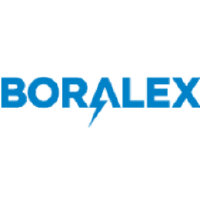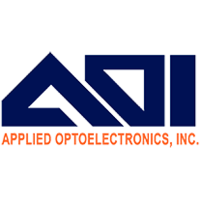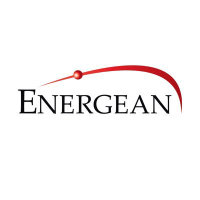
Boralex Inc
TSX:BLX


| US |

|
Johnson & Johnson
NYSE:JNJ
|
Pharmaceuticals
|
| US |

|
Berkshire Hathaway Inc
NYSE:BRK.A
|
Financial Services
|
| US |

|
Bank of America Corp
NYSE:BAC
|
Banking
|
| US |

|
Mastercard Inc
NYSE:MA
|
Technology
|
| US |

|
UnitedHealth Group Inc
NYSE:UNH
|
Health Care
|
| US |

|
Exxon Mobil Corp
NYSE:XOM
|
Energy
|
| US |

|
Pfizer Inc
NYSE:PFE
|
Pharmaceuticals
|
| US |

|
Palantir Technologies Inc
NYSE:PLTR
|
Technology
|
| US |

|
Nike Inc
NYSE:NKE
|
Textiles, Apparel & Luxury Goods
|
| US |

|
Visa Inc
NYSE:V
|
Technology
|
| CN |

|
Alibaba Group Holding Ltd
NYSE:BABA
|
Retail
|
| US |

|
JPMorgan Chase & Co
NYSE:JPM
|
Banking
|
| US |

|
Coca-Cola Co
NYSE:KO
|
Beverages
|
| US |

|
Walmart Inc
NYSE:WMT
|
Retail
|
| US |

|
Verizon Communications Inc
NYSE:VZ
|
Telecommunication
|
| US |

|
Chevron Corp
NYSE:CVX
|
Energy
|
Utilize notes to systematically review your investment decisions. By reflecting on past outcomes, you can discern effective strategies and identify those that underperformed. This continuous feedback loop enables you to adapt and refine your approach, optimizing for future success.
Each note serves as a learning point, offering insights into your decision-making processes. Over time, you'll accumulate a personalized database of knowledge, enhancing your ability to make informed decisions quickly and effectively.
With a comprehensive record of your investment history at your fingertips, you can compare current opportunities against past experiences. This not only bolsters your confidence but also ensures that each decision is grounded in a well-documented rationale.
Do you really want to delete this note?
This action cannot be undone.

| 52 Week Range |
23.88
32.92
|
| Price Target |
|
We'll email you a reminder when the closing price reaches CAD.
Choose the stock you wish to monitor with a price alert.

|
Johnson & Johnson
NYSE:JNJ
|
US |

|
Berkshire Hathaway Inc
NYSE:BRK.A
|
US |

|
Bank of America Corp
NYSE:BAC
|
US |

|
Mastercard Inc
NYSE:MA
|
US |

|
UnitedHealth Group Inc
NYSE:UNH
|
US |

|
Exxon Mobil Corp
NYSE:XOM
|
US |

|
Pfizer Inc
NYSE:PFE
|
US |

|
Palantir Technologies Inc
NYSE:PLTR
|
US |

|
Nike Inc
NYSE:NKE
|
US |

|
Visa Inc
NYSE:V
|
US |

|
Alibaba Group Holding Ltd
NYSE:BABA
|
CN |

|
JPMorgan Chase & Co
NYSE:JPM
|
US |

|
Coca-Cola Co
NYSE:KO
|
US |

|
Walmart Inc
NYSE:WMT
|
US |

|
Verizon Communications Inc
NYSE:VZ
|
US |

|
Chevron Corp
NYSE:CVX
|
US |
This alert will be permanently deleted.
Boralex Inc
Boralex Inc., a stalwart in the renewable energy sector, has steadily carved out a significant presence in North America and Europe through its sustained focus on generating clean power. Founded in 1990 and headquartered in Kingsey Falls, Quebec, the company initially gained traction by capitalizing on Quebec’s robust forestry industry, venturing into cogeneration with wood residue. Over time, Boralex astutely pivoted towards specializing in the renewable energy arenas of wind, solar, hydroelectric, and thermal power. By leveraging strategic acquisitions and pursuing greenfield projects, it has expanded its portfolio to a capacity exceeding 2 GW, primarily dominated by wind farms, which account for a substantial portion of its energy output. This maneuvering not only underscores the company's commitment to sustainability but also positions it strategically within a growing market for clean energy.
Financially, Boralex thrives by capitalizing on long-term power purchase agreements (PPAs) that guarantee steady revenue streams and mitigate exposure to fluctuating energy prices. These agreements typically span several decades, providing the company with a reliable cash flow, a critical factor that bolsters its stability and attractiveness to investors. A significant share of its revenues comes from the sale of electricity across diverse geographies, largely within Canada, France, and the United States. By efficiently managing its assets and optimizing the performance of its installations, the company underscores its operational acumen. Furthermore, Boralex's continuous reinvestment into cutting-edge technology and expansion projects signifies its ambition to capitalize on the global trend toward renewable energy, ensuring sustained growth and societal impact for the foreseeable future.

Boralex Inc., a stalwart in the renewable energy sector, has steadily carved out a significant presence in North America and Europe through its sustained focus on generating clean power. Founded in 1990 and headquartered in Kingsey Falls, Quebec, the company initially gained traction by capitalizing on Quebec’s robust forestry industry, venturing into cogeneration with wood residue. Over time, Boralex astutely pivoted towards specializing in the renewable energy arenas of wind, solar, hydroelectric, and thermal power. By leveraging strategic acquisitions and pursuing greenfield projects, it has expanded its portfolio to a capacity exceeding 2 GW, primarily dominated by wind farms, which account for a substantial portion of its energy output. This maneuvering not only underscores the company's commitment to sustainability but also positions it strategically within a growing market for clean energy.
Financially, Boralex thrives by capitalizing on long-term power purchase agreements (PPAs) that guarantee steady revenue streams and mitigate exposure to fluctuating energy prices. These agreements typically span several decades, providing the company with a reliable cash flow, a critical factor that bolsters its stability and attractiveness to investors. A significant share of its revenues comes from the sale of electricity across diverse geographies, largely within Canada, France, and the United States. By efficiently managing its assets and optimizing the performance of its installations, the company underscores its operational acumen. Furthermore, Boralex's continuous reinvestment into cutting-edge technology and expansion projects signifies its ambition to capitalize on the global trend toward renewable energy, ensuring sustained growth and societal impact for the foreseeable future.
Production Growth: Total combined production increased by 9% year-over-year, mainly due to new sites in Europe.
EBITDA: Combined EBITDA was $108 million, down $1 million from last year, as higher production could not offset lower short-term power prices in France.
Project Pipeline: Added 395 megawatts of new projects to the development portfolio and advanced key construction projects in Canada and the US.
French Market Strategy: Management is focusing on repowering and recontracting in France to secure long-term revenue, with recent tender wins above average tariff levels.
Financial Flexibility: Liquidity rose to $811 million, and project debt totals $4.4 billion (87% project debt), supporting future growth.
Outlook: Q4 expected to be strong, with new project contributions and ongoing price effects in Europe; market and policy developments in Quebec, Ontario, and the US remain key focus areas.







































